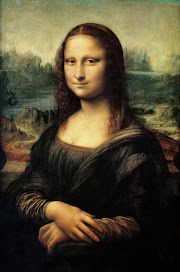Contemporary art refers to work produced within the past 60 to 70 years, covering the 1950s and 1960s to present. Unlike previous artistic movements, contemporary art does not include a common ideology or principles. It encompasses a wide range of styles, materials, and themes.
So what makes a painting contemporary and when gets a contemporary paintings for sale ready? It needs to be created by a living artist. However, the answer is not straightforward.
Here is a closer look at the main characteristics of contemporary paintings.
Contemporary Paintings Often Reflect Current Concepts
While contemporary paintings are produced by living artists, what makes a painting contemporary continues to shift. A painting produced in the 1950s would have been contemporary at the time. However, modern critics would likely classify the same painting as a work of modern art.
Due to the changing nature of contemporary art, paintings tend to reflect current concepts. The paintings are a sign of the times in which they were produced and may convey culturally relevant themes.
Many contemporary artists try to capture current cultural and societal issues. Common themes include politics, technology, migration, human rights, and advocacy.
Difference Between Modern Art and Contemporary Art
Understanding what makes a painting contemporary is easier when comparing it to the previous artistic movement.
Technically, contemporary artwork includes work from the 1960s up to the present. Modern art covers the period between the 1860s and the 1960s. However, the transition to contemporary started earlier.
Before the emergence of modern art, painters strived for realism. Paintings from the Renaissance period and romanticism movement often feature realistic depictions of people.
In the second half of the 1800s, painters moved toward experimentation. Instead of accurately reflecting the world, modern artists experimented with different techniques and materials, leading to impressionism and post-impressionism. Painters of this period include Van Gogh and Paul Gauguin.
Contemporary Paintings Focus on the Viewer’s Impression
Many art historians consider the abstract expressionist movement as the start of contemporary art. While modern art was more focused on the artist’s impression of the subject, Jackson Pollock and other painters started to focus more on the viewer’s impression.
In many cases, contemporary paintings are made to spark dialogue or force people to see things in a different way.
What makes a painting contemporary also depends on who you ask. Some art specialists and painters define contemporary paintings as any work produced by a living artist. Others require contemporary artwork to reflect the world today.
Art critics also have concerns about contemporary artwork. As galleries continue to feature more avant-garde artists and experimental painters, critics often question the definition of art.
Many contemporary painters follow abstract expressionism. These paintings tend to contain surrealistic or avant-garde features. However, contemporary artists may use any style they choose as contemporary art does not have a set style.
In the end, the main characteristic of contemporary painting is innovation. Contemporary paintings should break boundaries and promote questions about modern life.
If you want to create a contemporary painting, try to present something original and unique that challenges the viewer to think.


















0 Comments